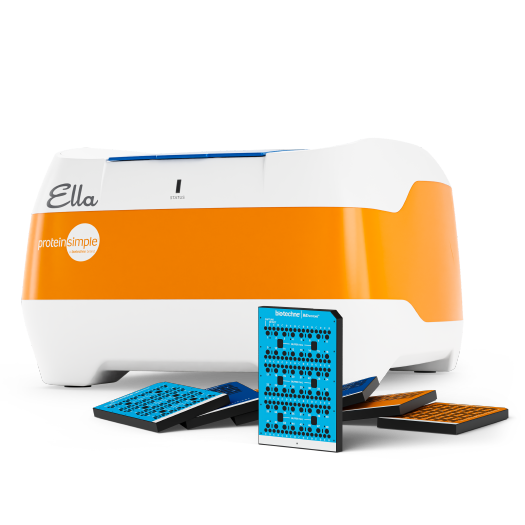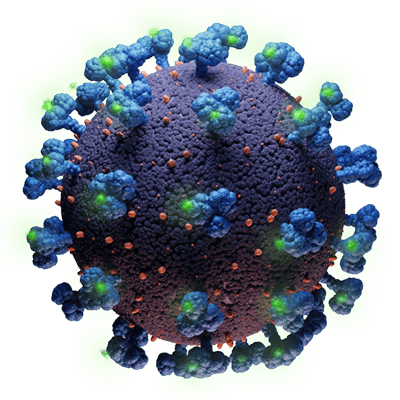Driving Better Immunoassay Performance: Expert Advice
Achieving accurate biomarker data hinges on careful assay development and meticulous validation. In this article, we talk to Greta Wegner, Ph.D., Vice President of the Cell & Gene Therapy Business Unit at Bio-Techne. She shares insights on the latest trends and recent advances in immunoassay techniques and offers recommendations for improving immunoassay performance and data quality.

Greta Wegner, Ph.D.
Vice President of the Cell & Gene Therapy Business Unit
Q: Controlling data variability across longitudinal studies is an ongoing challenge for researchers. What steps can users take to improve consistency and reproducibility of assay results in their lab?
A: A number of elements including dilutions, sample extractions and handling of reagents can impact assay outcomes. One frequent cause of error when running any immunoassay is user inconsistency . Operators may perform an assay using a different technique than what has been validated or is illustrated in a standard procedure. In addition, inconsistencies between users and between days in pipetting techniques, sample collection and preparation, incubation timing, and washing technique can affect assay results. To mitigate any potential impact, it is important to always follow best practice protocols. This includes making sure all reagents are room temperature, ensuring pipettes are calibrated, and establishing consistent laboratory pipetting, incubation, washing, and sample handling procedures within your lab.
Another challenge is achieving quality and consistency both between studies and within studies, which can lead to differences in biomarker quantification. This is where proper immunoassay controls play a vital role in terms of providing a critical independent reference point. A positive ELISA control, for example, can be a recombinant or natural sample with an established range in the assay. With our R&D Systems Quantikine® ELISAs, we offer tri-level recombinant controls for assessing operator and day-to-day variability. These controls provide a check for assay performance demonstrating that your assay meets performance specifications during that assay run. Researchers can also create their own assay controls using recombinant or pooled natural samples to monitor operator and assay variability over a long-term study. Ultimately, for the most accurate and correlative data, consistency and standardization should be introduced anywhere and everywhere possible.

Q: When immunoassay results are inconsistent or inaccurate, researchers often incorrectly default to blaming the antibodies. What have you seen in your experience?
A: While antibody variability can impact assay consistency, we often find inconsistency stems from other aspects of the assay. Consistent assay performance is vital for longitudinal studies, but not all manufacturers characterize their assays and reagents in the same way. To ensure consistency, it is important assays are evaluated using a variety of established methods such as linearity, recovery, precision, and specificity. Stringent manufacturing and quality control standards help ensure the assay provides the highest levels of performance and consistency. At Bio-Techne, our assays and assay kits undergo months of rigorous testing and validation to ensure optimum assay precision and reproducibility, both well-to-well and lot-to-lot. This extensive optimization during development helps prevent possible interferents in the sample, which can lead to to false positive and negative results or variability in reported values over time.
One frequent misunderstanding related to ELISAs is that they are all fundamentally the same assay that you can plug any target antigen into. The reality is that conditions for one analyte might not hold true for another so thorough optimization is critical. Even elements like the quality of wash buffer can impact the signal, underscoring the importance of carefully considering every assay component and closely following development and preparation protocols.

Q: Today’s researchers have a wide range of choices available when it comes to multiplex assays. What advice do you have for selecting a solution that best fits your needs?
A: The first step is to identify the targets that are essential to your experiment and narrow your focus to panels that include those targets. With today’s multiplex options, including a wide array of Luminex® assays, you can measure a multitude of different targets without increasing your sample volume. Ideally you want to consider a panel that allows you to profile additional targets that may provide value in subsequent stages or along parallel pathways.
Vendor data sheets and online tools can also provide important information about assay options, reproducibility, sample-type compatibility, and working ranges. Look for assays with clear performance data and reagents developed specifically for your key targets.


Q: While immunoassay techniques continue to improve, there is a growing need for more advanced capabilities that can deliver faster throughput, greater sensitivity, and better ease of use. How are manufacturers meeting this demand?
A: Some of the latest developments include no-wash ELISAs with reduced-step protocols, along with new automated platforms designed to eliminate user error and accelerate time-to-results. Meanwhile, the ability to miniaturize immunoassays down the nanoliter level is enabling researchers to generate more data from smaller amounts of samples and reagents.
Miniaturization and automation not only improve the efficiency of critical steps along the discovery continuum, but also help remove many potential sources of variability to provide more accurate and reproducible results. While different labs require different degrees of automation, the underlying need for greater precision, throughput, and reproducibility remains a key driver.
One advantage of our fully automated Ella platform is its transferability. With Simple Plex™ assays run on Ella™, you get the same reproducible answers across multiple users and multiple sites, regardless of the user. The format emulates a traditional sandwich ELISA, however everything is pre-loaded onto a cartridge. Users simply dilute the samples and run the analyzer without all the manual preparation of a traditional ELISA.

Q: There have been notable improvements in assay sensitivity recently, particularly in the area of cytokine detection. What are the range of options available for today’s researchers?
A: Most of today’s cytokine detection is conducted using ELISAs, flow cytometry, and bead-based assays. Conventional plate-based ELISAs are effective methods of cytokine detection, and are suitable for routine usage when speed or throughput is not critical. High sensitivity ELISAs are also broadly available. This technology has advanced in recent years to include multiplex and bead-based formats that can be expertly engineered to simultaneously detect many cytokines.
In creating our Human XL Cytokine Discovery Luminex® Performance Assay, for example, we spent a substantial amount of time perfecting the assay diluents to correct for potential interferents in the sample matrix, which would cause data variability. Inevitably, some analytes don’t make the cut because they don’t meet our rigorous performance requirements.
Ultimately, no matter what type of assay you use for cytokine analysis, accurate biomarker detection still comes down to having good antibodies, established controls, and extensive optimization during immunoassay development. At Bio-Techne, our goal is to support biomarker research with single analyte and multiplexing technology on as wide a scale as possible without sacrificing immunoassay precision and accuracy.

Greta Wegner is Vice President of the Cell & Gene Therapy Business Unit at Bio-Techne in Minneapolis, Minnesota. Greta received her Ph.D. in Chemistry at the University of Wisconsin-Madison. In her current role, she leads the product management and development teams designing ELISA, Luminex, and Simple Plex products as well as custom assay solutions.
Get More Immunoassay Expert Advice
Luminex® is a Registered Trademark of Luminex Corporation.


